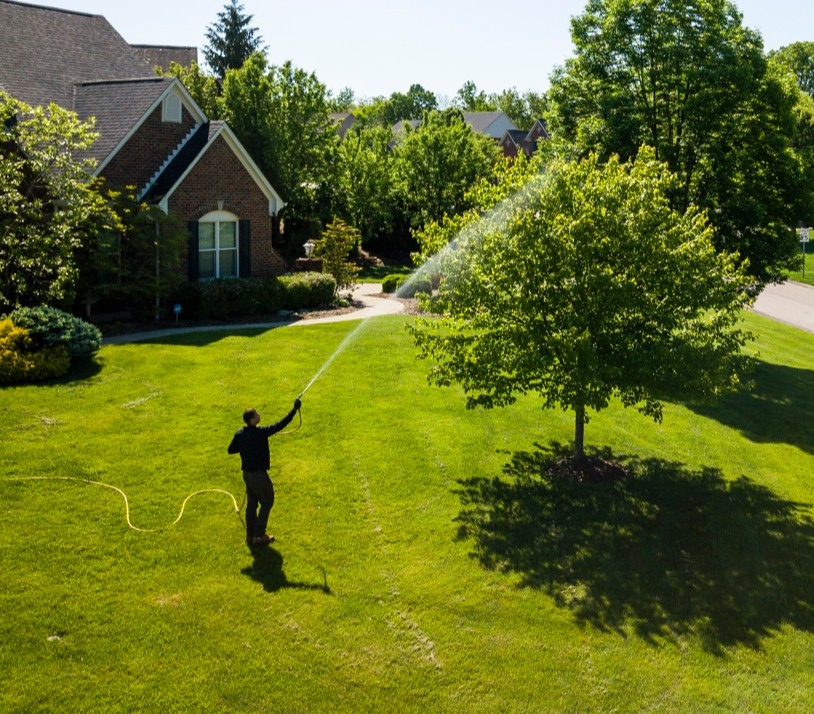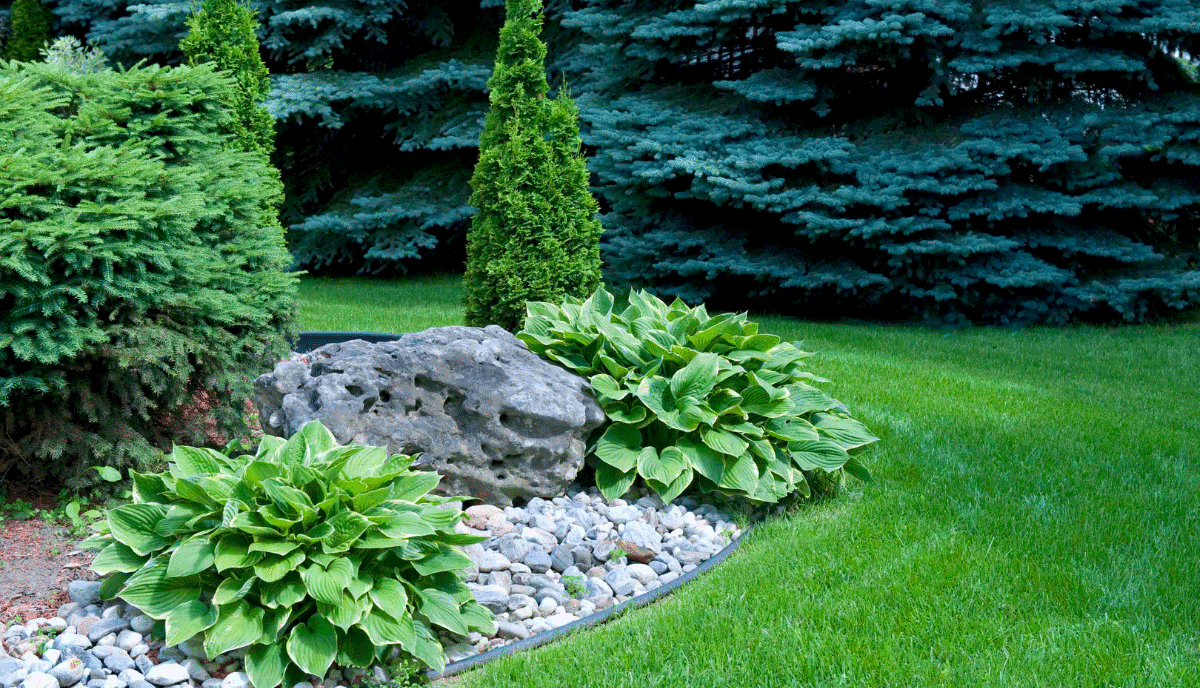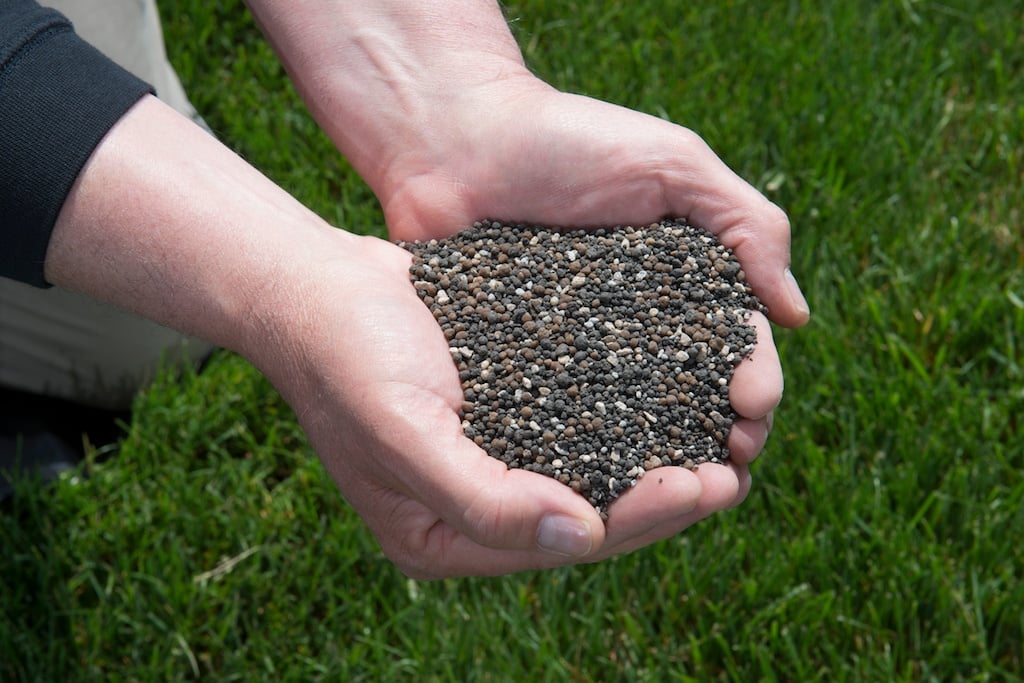
Treating poison ivy is manageable, but it requires extreme caution and vigilance even after treatment. Often, homeowners overlook the plant’s roots after removing it, causing it to reappear. Today, we’re sharing detailed information about poison ivy, ways to identify and distinguish it from other plants, when and where it grows, control measures, and how to prevent it from coming back after removing it.
What is poison ivy?
Poison ivy is a plant that contains an oily resin known as urushiol. When urushiol comes into contact with the skin,
Skin contact causes contact dermatitis, a red, itchy rash with bumps or blisters. While many homeowners can easily identify and avoid poison ivy, it becomes particularly concerning in areas with children and pets who can’t tell it apart from other harmless plants.
This plant does not tolerate regular mowing and rarely thrives in well-manicured lawns. However, homeowners may still find it along fences, flower beds, and wood piles. Poison ivy’s vines make it a noticeable climber that can easily spread laterally along the ground.
All of these creeping, crawling poisonous vines make this toxic plant even more difficult to eradicate and a much bigger problem in areas where children and pets play.
How to identify poison ivy
The plant is best identified by its trifoliate, compound leaves. Hence the old rhyme “leaves of three, let them be.” Poison ivy’s leaves are attached to red petioles and are mostly hairy on older plants. Homeowners can also identify it by its oblong leaflets, which have smooth margins that sometimes have a lobe or notch on one side.
While garden and homeowners can certainly avoid poison ivy foliage, it is always best to try to eliminate the problem before unsuspecting people get close to the vine.
How to Distinguish Poison Ivy from Other Plants
As mentioned above, the poisonous plant has three pointed leaves that change color depending on the season. They turn reddish in spring, green during summer, and yellow-orange or red in autumn. The leaves may also have serrated edges in some plant species. In other species, they are smooth.
Poison ivy plants sometimes have white berries that they use to spread and cover larger areas. Birds eat these berries and transplant the seeds into new soil along with their droppings. This is one of the main reasons why the plant is so common throughout the United States, except in California, Hawaii, Alaska, and other parts of the West Coast.
When and where does poison ivy grow?
The plant grows throughout most of North America, camouflaging itself as a shrub, ground cover plant or vine. It prefers “disturbed soil,” such as a background perimeter along paths, roads, trees and fences. It blends well into the landscape.
Poison ivy is primarily associated with spring and summer, when it is most abundant. It prefers savanna and woodland habitats, but can also be found along grassland edges, stream banks, and other uncultivated habitats.
The poisonous plant spreads primarily by shoots that emerge from extensive, shallow, horizontal root systems. Its above-ground vine allows it to creep along garden perimeters, walls, and branches of other plants.
Controlling poison ivy
A dry, windless day is the best and safest time to control and remove poison ivy from your lawn, especially if you use a spray herbicide to kill the plant. You don’t want the herbicide to drift onto you or other desirable plants. A windy day could also disperse parts of the poison ivy into surrounding areas, which would make the problem worse rather than solving it.
We also recommend removing poison ivy during the spring, when its leaves are red and it is easier to spot. However, it is essential to control and prevent the plant from spreading as soon as you identify it. This is when it is easier to control and eradicate it from your garden.
How to get rid of poison ivy
Attempting to remove the plant without taking proper precautions can lead to rashes or, worse, an allergic reaction when the leaves come into contact with the skin. This section offers information on how homeowners can get rid of poison ivy infestation or prevent it altogether:
Pulling by the hand
Removing poison ivy with a glove is one of the most effective ways to remove the plant. However, this process requires direct contact with the plant, so extreme care is required to avoid damaging it or its roots.
Start by cutting off the stems that are above the ground with sharp scissors. If you tear or snap off the stems, the toxic resin could become airborne, which can cause poison ivy reactions like those mentioned above. Dispose of the cut parts in heavy-duty yard waste bags before digging up the roots with a small hand shovel and disposing of them in the yard waste bag.
Sprinkle with boiling water
It will be necessary to immerse the plant in boiling water to scald its tissues and kill it. However, it is worth mentioning that this method may not be as effective in killing the entire plant and may require several attempts to completely destroy the hidden roots and stems.
The leaf tissue left after blanching the plant may still have urushiol oil on its surface, which could cause an itching or allergic reaction when it comes into contact with the skin.
Herbicides
Many commercial herbicides used to control and kill poison ivy require a higher concentration to be effective. We recommend homeowners consult the manufacturer’s instructions and guidelines before using commercial herbicides for best results. While natural treatment is preferable, commercial herbicides are most effective when used judiciously.
Drown the plant
Smothering poison ivy requires blocking the sources of oxygen and light it uses to thrive. However, the plant’s hardy nature can make this method of control less effective, depending on the smothering method used. Poison ivy adapts well and can thrive in shady conditions and situations, so smothering is a less recommended solution.
Hire a professional
This is the most effective poison ivy control method for removing poison ivy plants from lawns and other areas. Hiring a professional landscaping company is recommended for extensive or difficult-to-control infestations. Professional landscaping experts have the knowledge, tools, and experience to safely remove poisonous plants and prevent them from growing back.
Will poison ivy plants come back after removing them?
The poison ivy control method with hands can be difficult, if not impossible, when it comes to mature plants with well-established root systems. Furthermore, the highly resilient nature of the plant means that it can regrow from root fragments left in the soil. Its complex roots would mean that homeowners would need at least three or four attempts to completely remove its underground stolons. If they failed to do so, the plant would regrow and infest the soil.
We recommend removing the entire plant, including roots and stems, when it is still small. This is the most effective way to control the plant. We also recommend mowing or tilling the lawn regularly and repeatedly cutting the vines back to ground level to keep it under control.
Preventing Poison Ivy
Herbicides containing glyphosate and triclopyr have proven effective in controlling the spread of poison ivy. Most grass species are tolerant of triclopyr, making it the preferred chemical component in herbicides instead of glyphosate, especially in areas where the herbicide may come into contact with the grass.
How to prevent poison ivy from appearing
We recommend that lawn owners be cautious when using commercial herbicides near broadleaf plants, as they may harm or injure these desired plant species along with the poison ivy plant. Contact a professional landscaping expert if you need help deciding whether you should spray the herbicide near other plants.
While getting rid of poison ivy from your lawn may seem like a good idea at the time, using the wrong herbicides or amounts could also harm other plants and the surrounding grass.
The conditions in which poison ivy thrives
Poison ivy can thrive in areas with partial or full sun exposure. It also adapts well to a variety of soil moisture conditions. It can grow in moist riparian areas as well as in arid, depleted soils, making it an incredibly resilient and difficult-to-kill plant.
Poison ivy is a woody perennial plant that can grow as a low, spreading shrub with delicate stems, a tall, upright bush, or as a woody vine attached to tree trunks by hairy rope-like aerial roots.
Frequently Asked Questions
What is the difference between poison ivy and poison oak?
Poison ivy and poison oak are two different plants, but they share similar characteristics, the main similarity being that they both contain urushiol.
Poison ivy is actually a vine with leaves that grow in groups of three. It grows mostly close to the ground, but can also grow as a vine or small bush on rocks and trees. Its leaves are somewhat pointed and have a deep green color that turns yellowish or reddish depending on the time of year. The leaves sometimes look shiny with urushiol.
Poison oak, on the other hand, has deeper green leaves with varying amounts of red at different times of the year. Its leaves also grow in groups of three, but are slightly different than poison ivy’s. They are more rounded, less pointed, and have a textured, hair-like surface.
Will killing poison ivy harm other plants?
We recommend hiring a professional landscaping expert to remove poison ivy from your lawn or land without killing other plants. A landscaping professional will assess the extent of spread, the species of poison ivy invading your land, and the best control and prevention measures to keep the plant from returning after it is removed.
We do not recommend using commercial herbicides containing glyphosate, as this chemical also kills grass. Instead, use herbicides containing 2,4-D, Mecoprop, Triclopyr, and/or Dicamba, as these chemicals are harmless to most grass species.
We also recommend that lawn owners spray herbicides on days with little or no wind and protect desired plants from spray with cardboard or plywood sheets. By following these tips, you can remove poisonous plants without harming other plants.
Lawn Doctor offers a variety of lawn treatments, including control and management of unwanted plants, including poison ivy. Contact our landscaping experts to help you keep your lawn in great condition without worrying about poison ivy.







